My first encounter with a red-crowned crane was many, many years ago. I was probably around six when I first saw the Japanese folktale book, Tsuru no Ongaeshi (The Crane’s Return of Favour). In the story, a red-crowned crane is rescued from a hunter’s trap by an old man. Under the disguise of a woman, the crane visits the man and his wife to repay them for helping her. She secretly turns back into a crane and weaves silk for them to sell and get money. But when they discover she’s not actually human, she has no choice but to leave and sadly they never see her again.
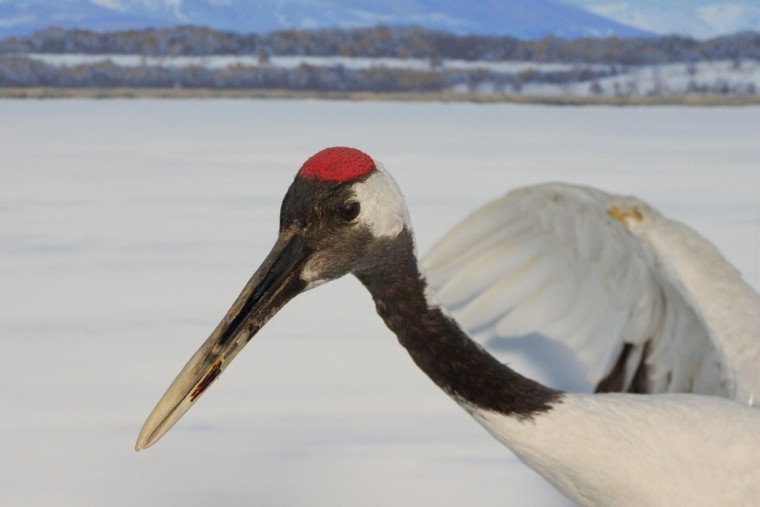
In Japanese, cranes in general are called tsuru, while red-crowned cranes specifically are called tancho. This refers to the red patch of skin on their head which appears when they’re about two years old. Tancho are endangered and exist only in Siberia, China and Hokkaido. It was thought that they were extinct in the early 1900s because of overhunting and urbanisation. But thankfully in 1925, ten birds were found in the Kushiro wetlands (now Kushiro Shitsugen National Park) in Eastern Hokkaido. From then on, a lot was done to protect and breed them. Now there is a population of around 2,000.

Cranes species around the world
Kushiro Shitsugen National Park
The tancho are probably most famous for their beautiful mating dance. To find a partner, the cranes face each other, throw back their heads, spread their wings and leap up in the air. Thousands of people go to the snow-covered feeding grounds around Kushiro every February to witness this special event. The best place catch this spectacle is near the Akan International Crane Centre.
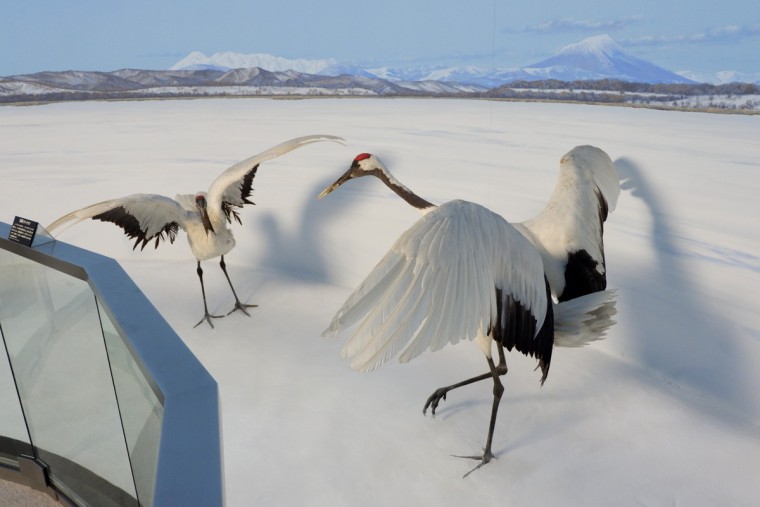
Crane dance display in the Kushiro City Museum
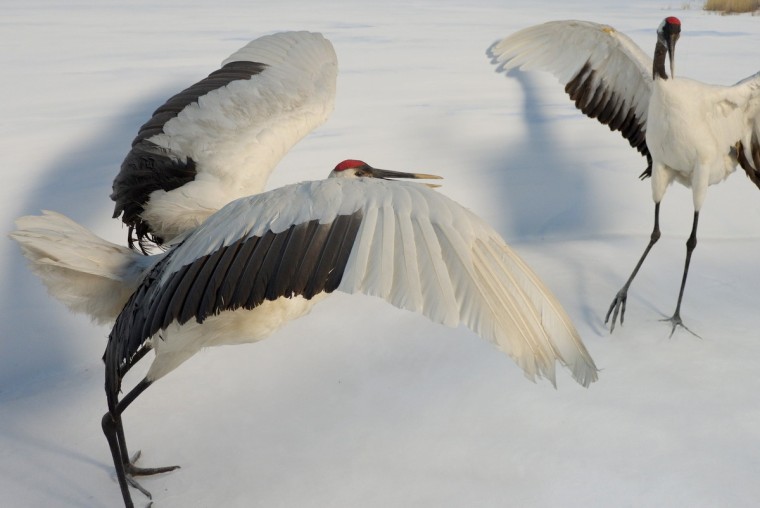
After finding a mating partner, the cranes begin their life together. In March, the pairs build a huge nest made of reeds in the marshlands. The nest is a giant, two-metre wide and 50cm deep cushion, with an indent in the middle where the eggs will be laid. They lay one or two eggs at a time. Then from April, the parents take turns incubating the eggs, switching places around four times a day. About a month after starting incubation, the eggs hatch. The baby cranes have soft brown feathers, and open their eyes and begin walking straight away.
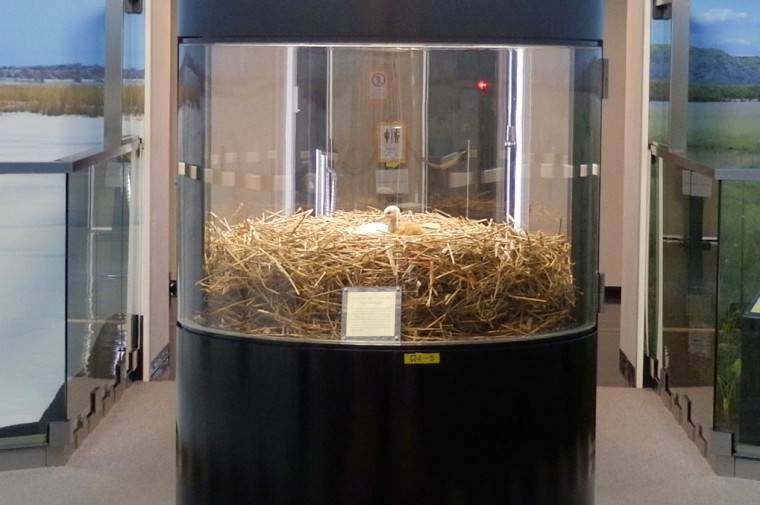
Little chick, big nest
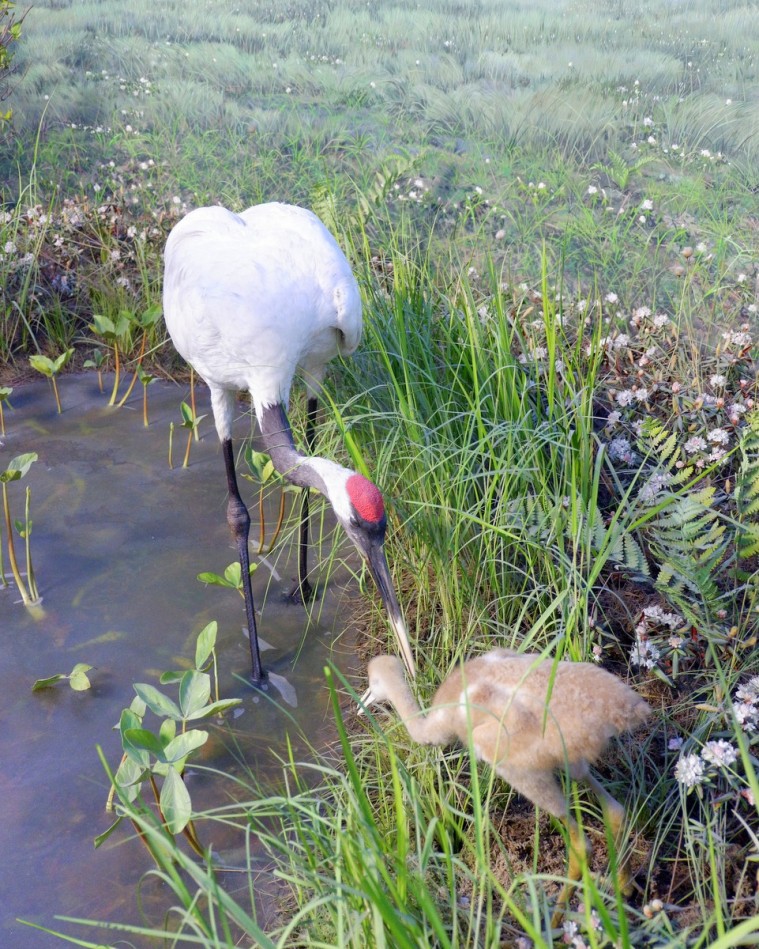

From June to October, the parents take turns feeding their babies. They start with little things like small fish, bits of crayfish, worms and insects. As the chicks get bigger, they start to eat larger fish, shellfish and frogs. They reach the size of their parents when they are just three months old. By 100 days, they are able to fly but they stay with their parents until they are around ten months old. During this time, their brown feathers gradually turn black and white like their parents. And then about three or four years later, they are ready to start breeding!

3 month old crane at the Akan International Crane Centre
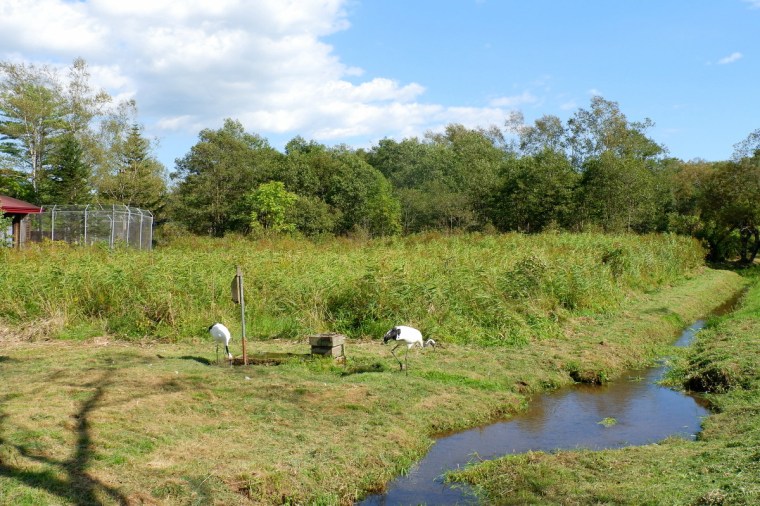

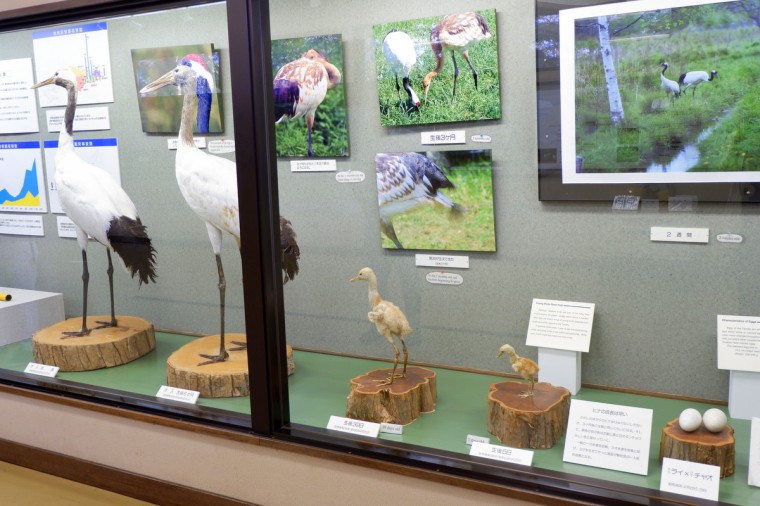
From egg to adult
The red-crowned cranes have become one of the symbols of Japan. They are the logo of Japan Airlines (JAL) and are a popular origami (paper folding) design.
What are some unusual or rare birds you’ve encountered either captive or in the wild?


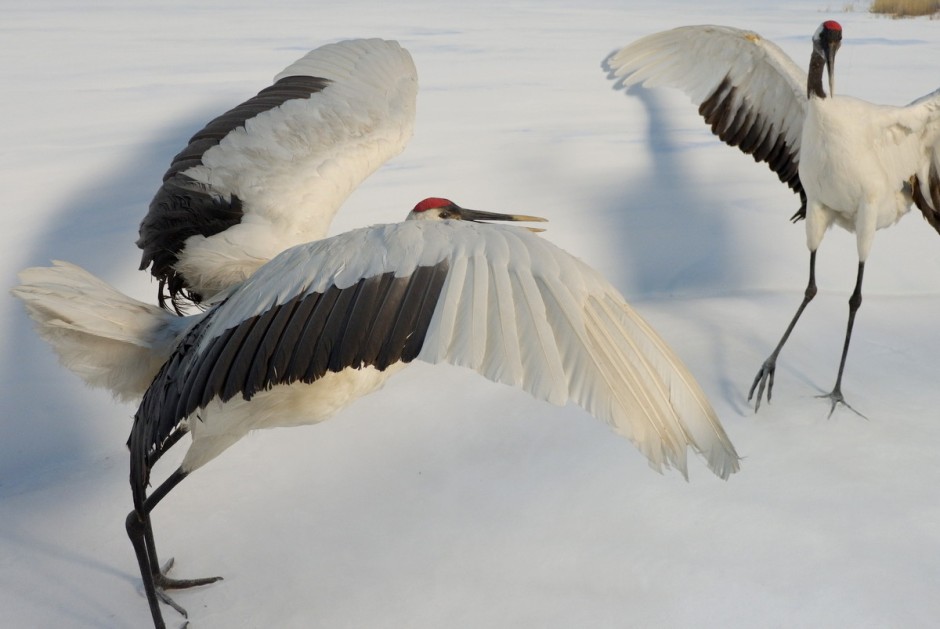
Loved this! I had to go search for a video of cranes dancing – graceful, beautiful and sometimes a bit crazy!
LikeLike
Thanks Eliza! It’s amazing isn’t it. I wonder what they’re thinking while they’re doing that… Imagine if humans had to do a dance in order to find a partner haha.
LikeLiked by 1 person
:) I just read an article about the Int’l Crane Foundation founder George Archibald, who famously danced with Whooping Cranes in order to enhance breeding behavior in cranes that had imprinted on humans. His work has been quite successful in increasing awareness and populations of 15 crane species worldwide. https://www.savingcranes.org Cool stuff!
LikeLike
How fascinating! I hadn’t heard of that guy. Thanks for sharing!
LikeLiked by 1 person
My pleasure, glad to share. Amazing coincidence that I read that article right after reading your post!
LikeLike
On my first visit to Taiwan, and probably on the second or third day of the trip, a kingfisher flew beside me. The colours were so vibrant. Wow! was all I could think.
LikeLike
Duh, I meant Vietnam. I have no idea why I typed Taiwan.
LikeLike
Also, I was on a bicycle…making the flyby more dramatic.
LikeLike
Amazing! I probably would have fallen off my bicycle out of excitement. Kingfishers are so beautiful!
LikeLiked by 1 person
雪が積もった釧路湿原で、翼を広げて舞う丹頂鶴の群れを見に行きたいです。
2月に北海道を訪れたいとおもいますが、セリアさんもいっしょに行きませんか。
LikeLike
来年、私もタンチョウの美しいダンスを見たいです!もっといいカメラを買わないといけない!
LikeLike
Brilliant, and I do love their small red “cap” on their heads. That photograph of the National Park is not an image I would have picked for Japan. Birds are mesmerising to sit back and watch their attics.
LikeLike
Thanks, Suzanne. You’re right – these wetlands really felt like a completely different country. It’s often likened to an African savannah! You can do canoe trips along the meandering rivers and see birds and other wildlife up close. An amazing place to visit especially when you know a bit about the landscape and animals!
LikeLike
Amazing write up about these red-crowned cranes. Based on legend it sounds like these birds have good intentions and symbolic of grace, elegance and kindness. Great shots.
LikeLike
Thanks Mabel :) Yes, they are most definitely a symbol of elegance and kindness. The pairs mate for life and continue to do these dances together every year which I think is so romantic!
LikeLiked by 1 person
Hokkaido is on the must-do list of many international birdwatchers and nature lovers because of its special wildlife. In March this year I saw these iconic cranes near Kushiro; such a great conservation success story for Japan. Plus it’s famous for a huge fish-eating owl and awesome sea eagles not to mention the bears and sea otters. Fabulous! Loved it!
LikeLike
Wow it must have been an incredible experience!! Did you go on your own or with a tour? I desperately want to go but am scared of driving on snowy roads since I’ve never done it before.
LikeLike
Isn’t it astounding that with care and protection, a population of just 10 birds could flourish to 2,000? Thank you for teaching me so much about these beautiful creatures, Celia … wonderful post!
LikeLike
Absolutely, Heide. It’s a great success story. Apparently it took more than 10 years to figure out how to breed them. But when they did finally get it right, their numbers boomed. I think the artificial feeding grounds in winter have helped a lot to maintain the population, too.
LikeLiked by 1 person
These cranes are really beautiful and graceful. I enjoyed reading this post a lot. Thank you Celia!
LikeLike
Thanks, Hien! Glad you enjoyed it. They are a beautiful and fascinating bird.
LikeLike
ahhhh i love red crowned cranes of hokkaido
LikeLike
Thanks Dion!
LikeLike